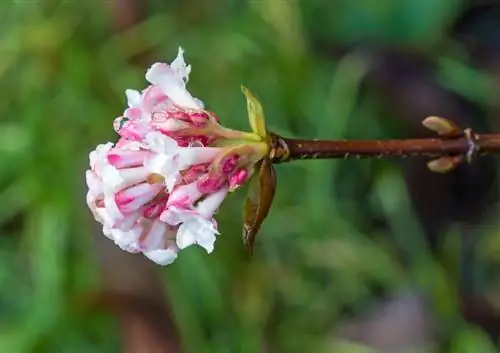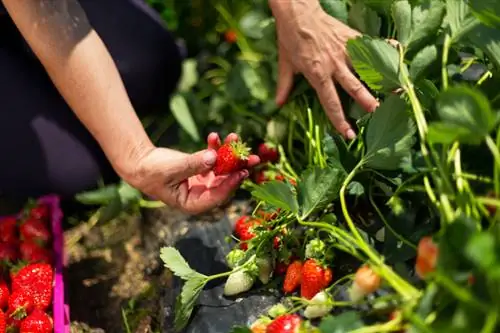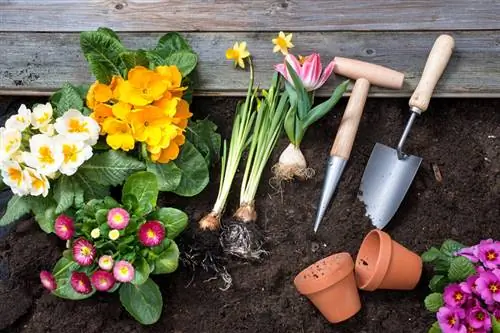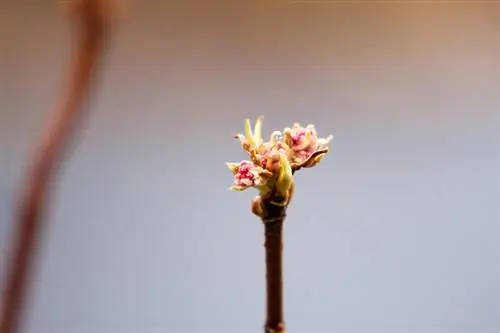- Author admin [email protected].
- Public 2023-12-16 16:46.
- Last modified 2025-01-23 11:20.
As the name suggests, winter is the time of the winter snowball. While other ornamental shrubs sleep peacefully, it does its best with its fragrant flowers. But how do you cut such a tree that blooms in winter?

When and how should you cut the winter snowball?
The optimal time to cut the winter viburnum is shortly after it has faded. Pay attention to frost-free days and cut off old, diseased or damaged shoots at the base. Regular thinning is recommended to maintain a harmonious plant shape.
After flowering is the optimal time
The winter viburnum should be cut shortly after it has faded. Depending on when it blooms, this can be as early as November. However, make sure you get a frost-free day for cutting. Some varieties and in cooler regions only bloom between February and March.
If you cut too late, you will remove the flower buds
Cut it immediately after flowering! If you cut too late, for example in October, you will remove the flower buds when cutting and the next flower will either fall completely into the water or be sparser.
Can handle cutting excellently
Overall, the scented snowball is considered to tolerate cutting well. It can easily be thinned out regularly - ideally a little every year.
- remove old shoots, new shoots can grow back
- It's better not to cut it shorter, otherwise broom growth will result
- cut away old, diseased, crossing, damaged and frozen shoots
- Cut off shoots at the base
Whether you can tolerate cutting this plant is another matter. The winter viburnum is poisonous in all parts of the plant. In particular, its bark and leaves, which you often come into contact with when cutting, contain a lot of toxins.
Cutting to obtain cuttings and cuttings
If you thin out the winter snowball in the summer, you can then use individual, straight-grown, cut shoots as cuttings. They should be between 10 and 20 cm long. You can also use clippings to propagate this ornamental plant in winter.
Tip
Actually, it is not necessary to prune the winter viburnum every year or at all. It naturally has a harmonious shape. But if necessary, it can also tolerate more pruning.






